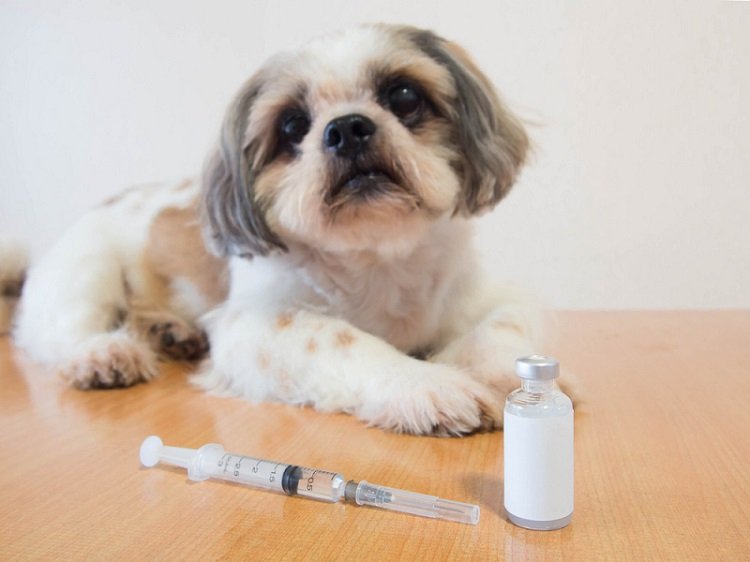If you ever thought that diabetes was a condition only found in humans, you might be surprised to learn that’s not the case. It’s also one of the more common hormonal diseases in dogs, meaning there’s a possibility your pet pooch could develop it during their lifetime. In this blog, we inform you about how to deal with Dog Diabetes.
It might be distressing to learn that your dog has come down with something like this, but hopefully, the following information will show that it’s not the end of the world.
Are you looking for Affordable Pet Care Services in Delhi NCR, Then download Monkoodog PetCare App.
1. The Symptoms Of Dog Diabetes
Before you can treat diabetes, you should try to find out if your dog has it. This condition presents itself in a number of signs, including increased urination, a greater appetite, weight loss, and poor vision.
Alone, these symptoms might not give you cause for concern, but it could still be worth taking your pet to the vet.
If your dog is diagnosed with diabetes, that doesn’t necessarily mean you’ve done anything wrong.
This condition can result from a number of factors, not all of which are in your control. While being overweight can be to blame, so too can age, gender, and genetics.
2. Supplying Regular Injections

If you’re not a fan of needles, then the thought of injecting your dog several times a day probably isn’t pleasant. Unfortunately, in cases of dog diabetes, this can be a necessary treatment to ensure they continue to live a happy and healthy life
Two injections around mealtimes are typically required a day, ideally with around 12 hours difference between them. This might be difficult to do at first, but once you fall into a routine, you’ll hopefully find that it gradually becomes easier.
If you still struggle to handle it, see if anyone else is up for the job. However, it would help to try and ensure that they can provide the injections at the same time every day.
Consistency is often key when giving dogs insulin, so if it’s possible to provide treatment at the same times each day, that could help.
You might want to consider asking your vet for assistance if you’re still struggling and no one else can help you out. They could be able to give you some pointers on what to do.
3. Having Insurance Can Help
Learning that your dog has diabetes can be stressful enough on its own without vet bills coming into the equation. Unfortunately, to stay on top of your pet’s treatment, you’ll probably want to visit your local veterinary surgery. Although this will cost you money, you won’t necessarily have to worry about this as much if you have insurance.
With the right cover, you can reduce some of the financial strain of diabetes. Hopefully, that will ease your mind a little, allowing you more time and energy to focus on your dog. If you’re wondering how much dog insurance is, the answer depends on what level of cover you go for.
At Everypaw, you can get a policy at a range of price points, and many different policy types, so you might be able to find the right policy for your pet.
While you might be concerned about the cost of dog insurance, having a policy in place could be a lifesaver if your pet gets ill. Many insurance providers don’t cover pre-existing conditions.
So, if your dog develops diabetes or some other medical problem and you switch insurance providers, you might struggle to claim as the new provider would consider pre-existing conditions.
However, if you stay with the original provider, then you could get support with your future vet’s bills.
4. Additional Treatment Options

Although insulin injections will hopefully help regulate your dog’s internal functions, you don’t just have to rely on them to keep your pet healthy and there are other options that you could explore.
There’s a good chance that your vet will also advise you to make certain changes to your diet following a diabetes diagnosis.
Generally, a balanced diet with a decent amount of fibre is best for dogs with this condition who aren’t underweight. So, if this isn’t what your pet has at the moment, it may be worth making some adjustments.
Along with changing their diet, you may also want to take your dog out regularly to ensure they get plenty of exercises. This can help stabilize your pet’s glucose levels and boost insulin absorption, which should make it easier for them to cope with their condition.
Also See: 10 Tips To Increase The Lifespan Of Your Dog
5. Possible Health Complications
While the treatments mentioned above can help your dog manage their diabetes, there’s always a risk that they may still develop other health issues.
Cataracts and urinary tract infections are typically the most common complications that arise in diabetic dogs, thanks to the sugar in their system.
It’s possible your pet might not encounter these problems at all and live out the rest of its days in good health.
However, it may be useful to know about these potential issues just in case they crop up in the future.
It’s never pleasant when a beloved pet gets ill, but hopefully, this guide has shown you that dog diabetes is a manageable condition.
It might come with some hardships – especially for those who dislike needles – but, hopefully, it’s not something that you and your dog can’t tackle together.
Also See: Rabies And Dog Bites: Everything You Need To Know About Rabies Treatment And Prevention

